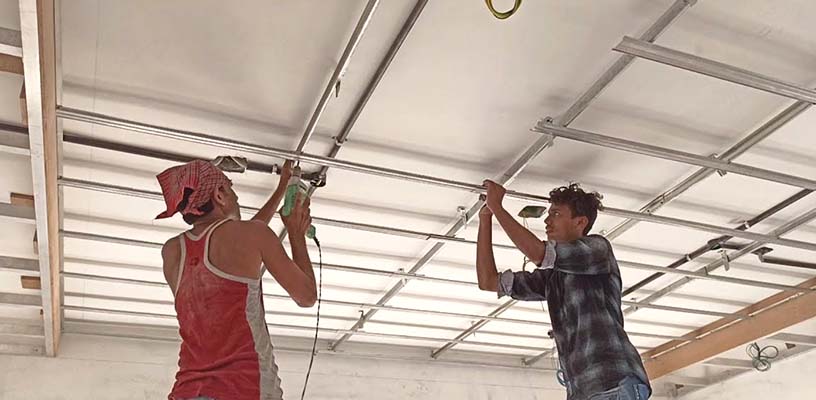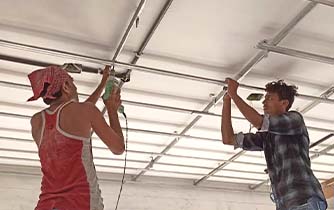Course Overview
The False Ceiling & Dry Wall Installer course is designed to
train individuals in the installation of false ceilings and drywalls,
which are essential components of modern interior construction. False
ceilings, also known as suspended ceilings, are secondary ceilings hung
below the main structural ceiling, used to conceal wiring, ductwork, and
to improve acoustics. Drywalls, on the other hand, are panels made of
gypsum plaster pressed between thick sheets of paper, used to create
interior walls and ceilings. This course equips students with the
practical skills and technical knowledge needed to excel in the
construction industry, particularly in residential, commercial, and
industrial projects.
Importance of False Ceilings and Drywalls
False ceilings and drywalls are crucial for enhancing the functionality
and aesthetic appeal of interior spaces. They provide a smooth, clean
finish, help with soundproofing, improve energy efficiency, and allow
for the installation of recessed lighting and other fixtures. As the
demand for modern, energy-efficient buildings grows, so does the need
for skilled installers who can deliver high-quality workmanship in the
installation of these systems.
/logo.png) ISO 9001 : 2015
ISO 9001 : 2015






